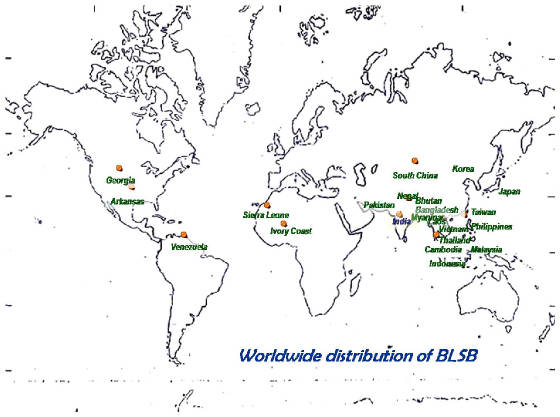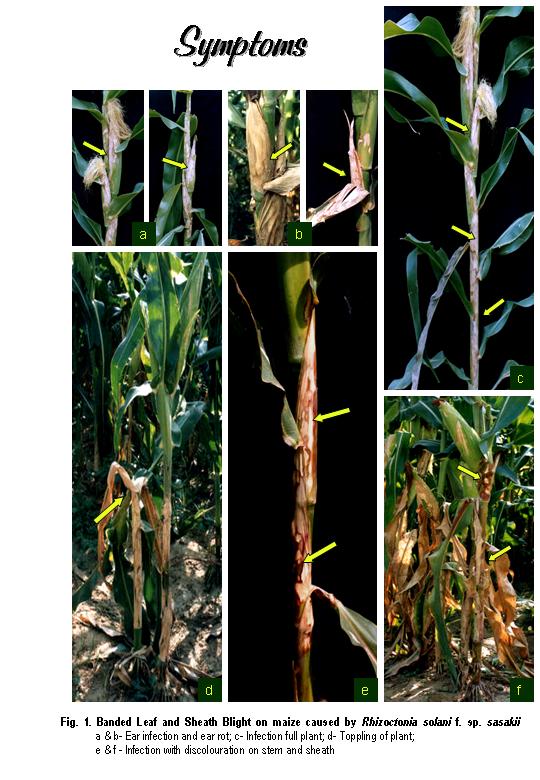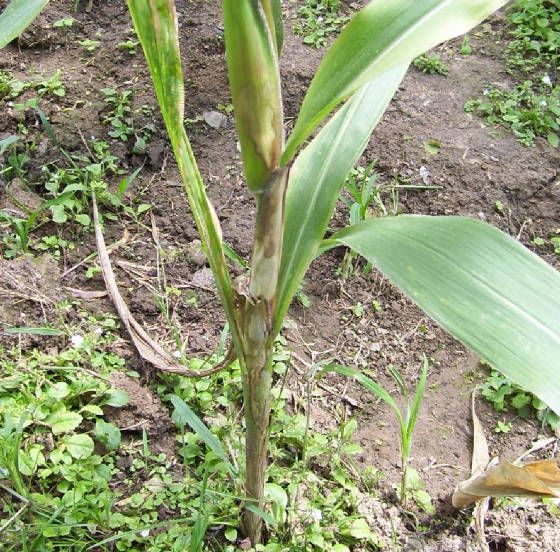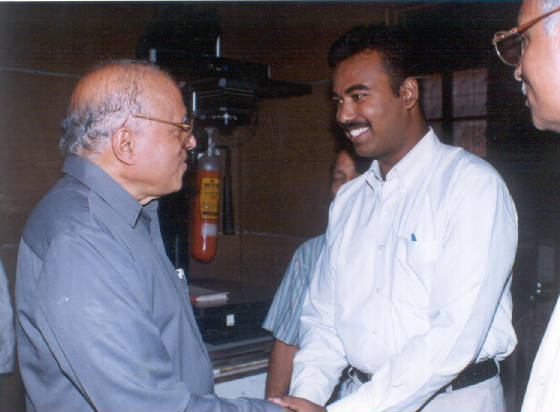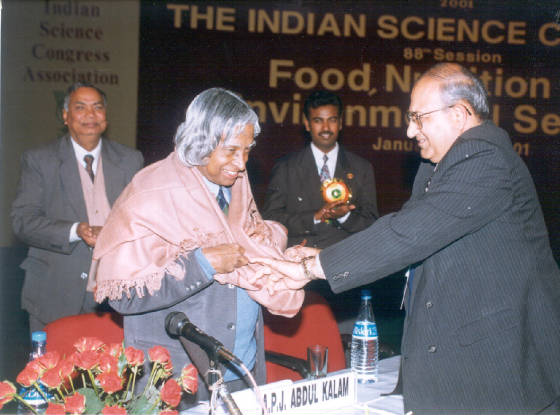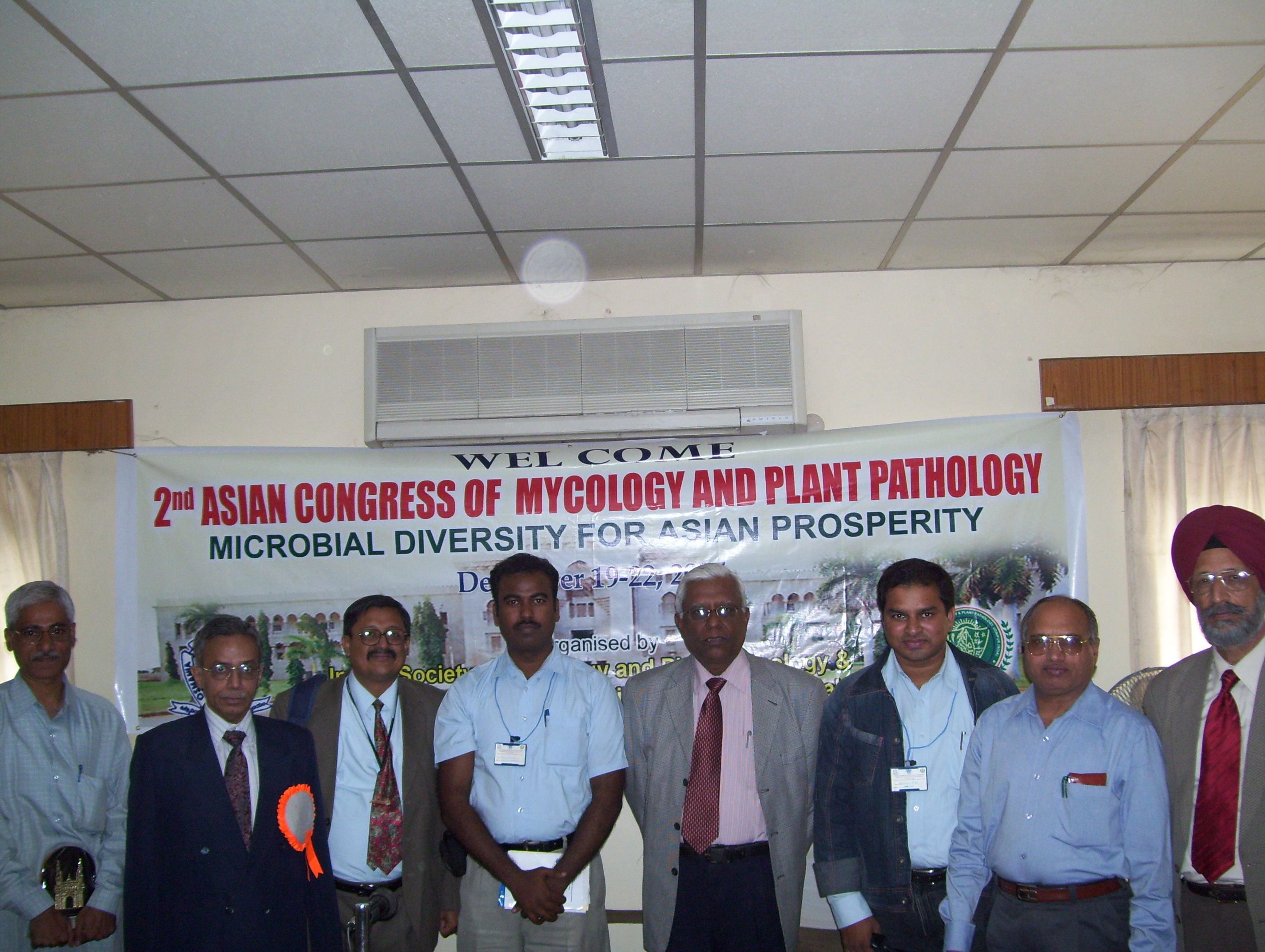|
|
Petikam's Page on Banded Leaf and Sheath Blight of Maize
An island in
the northern Antilles, near today's San Salvador populated by Tahino people, in whose language the name for their staple crop
was "mahis." The name meant “source of life." That word has been transmutated phonetically into today's "maize" in English,
and "maíz" in Spanish. Columbus, 1492 |
|||||
|
Maize crop suffers from various diseases resulting in considerable loss in yield. Among them
banded leaf and sheath blight (BLSB) on maize incited by Rhizoctonia solani f.sp. sasakii Exner (Thanatephorus
sasakii (Shirai) Tu & Kimbro), is gaining economic importance. It was reported for the first time from Sri Lanka
(Bertus, 1972) under the name Sclerotial disease. In India in early sixties the disease of minor importance in the western
central Himalayan foothill region. However, it became increasingly severe and assumed epidemic proportions in the next two
decades. Presently, the disease is considered as a major disease not only in India but also in several countries of tropical
Asia wherever maize is grown. Economic importance In spite of the increasing concern on the economic losses caused by this disease,
only India and South China have generated significant information on the impact of the disease on reducing yields. The disease
cause direct losses resulting in premature death of the plant, stalk breakage and ear rot besides causing indirect losses
by reducing the gross yield. In India, losses in grain yield have been estimated in the range of 23.9 to 31.9 per cent in
ten cultivars (Lal et al., 1980). Singh and Sharma (1976) estimated 40.5per cent
loss in grain yield with 71 per cent disease index. In Guangxi province in South China yield losses of 87.5 and 57.8per cent
have been determined under natural conditions in the hybrids Luyu 13 and Guiding planted at Bao Qiao and Chen Xiang countries
(Zhang et. al., (1993) unpublished). Sumner and Minton (1989) in trials planted
in infested and non-infested plots with high and low inoculum levels, reported yield reduction of 47, 42 and 8per cent in
soils infested with the high inoculum level and 15, 19 and 1per cent in the low inoculum levels for a three year period, in
the field trials carried out in U.S.A. (Georgia). However, the magnitude of grain loss may reach as high as 100 per cent if
the ear rot phase of the disease predominates. Payak and Sharma (1985) have reported that annually around 1 per cent of the
total grain yield is reduced by BLSB in India. The pathogen Banded leaf and sheath blight of maize is caused by Rhizoctonia solani f. sp. sasakii. The genus Rhizoctonia was erected in the year 1815 (De Candolle, 1815) to accommodate the non-sporulating root pathogen
R. crocorum D.C. ex.Fr. It was described under the name Rhizoctonia solani which was earlier reported about 100-year ago by the German Scientist Julius Kühn on diseased
potato tubers. Since then the fungus has gained the reputation of being one of the most wide spread destructive and versatile
plant pathogens. Sheath blight pathogen has been considered distinct from R. solani
complex on the basis of cultural characters, symptomatology, pathogenicity (Exner, 1953) and compatibility (Ogoshi, 1975a,
1975b; Ogoshi, 1976; Parmeter et al., 1969).Comparative studies on mycelial and
sclerotial characters of basidial (teleomorph) and anamorph of Corticium solani, C.
microsclerotia and C. sasakii led to
the conclusion that these did not differ significantly as distinct species and considered as forma specialis of Pe!licularia filamentosa (Pat.) Rogers, a synonym
of T. cucumeris (Frank) Donk. An additional
f. sp. timisii was created to have four strains f. sp. sasakii, f. sp. microsclerotia, f. sp solani and f. sp timsii. Above ground habitat, higher optimum temperature requirement for growth, limited
saprobic ability, higher sensitivity to CO2 and greater virulence to rice plant, have been used to differentiate
sasakii type from other strains of R. solani
in Japan (Ogoshi, 1976; 1984). On the basis of morphological, cytological and cultural characters including pathogenicity,
the sasakii group attacks graminaceous hosts and causing, distinct symptoms of
bands on leaf and sheath and therefore can be distinguished as a forma specialis = Rhizoctonia solani f. sp. sasakii (Ahuja and Payak, 1984). The teleomorphic stage has not been
recorded on maize. However, as many maize and rice isolates are identical and cross infective the perfect stage of the maize
pathogen may also belong to T. sasakii as described by Tu and Kimbrough (1978). The pathogen is found in most parts of the world and is capable of attacking
a wide range of host plants including maize, causing seed decay, damping-off; stem canker, root rots, aerial blight and seed
decay. Because of these wide variations in morphology, pathogenicity and physiology, the taxonomy and nomenclature of R. solani have always been the subjects of rigorous research. |
|
||||
|
INDIAN AGRICULTURAL RESEARCH INSTITUTE, NEW DELHI
“EVERYTHING ELSE CAN WAIT BUT NOT AGRICULTURE”
– Pt. Jawaharlal Nehru
"We
owe a lot to the Indians, who taught us how to count, without which no worthwhile scientific discovery could have been made!"
- Albert Einstein (Theoretical Physicist, Germany)
|
|||||
